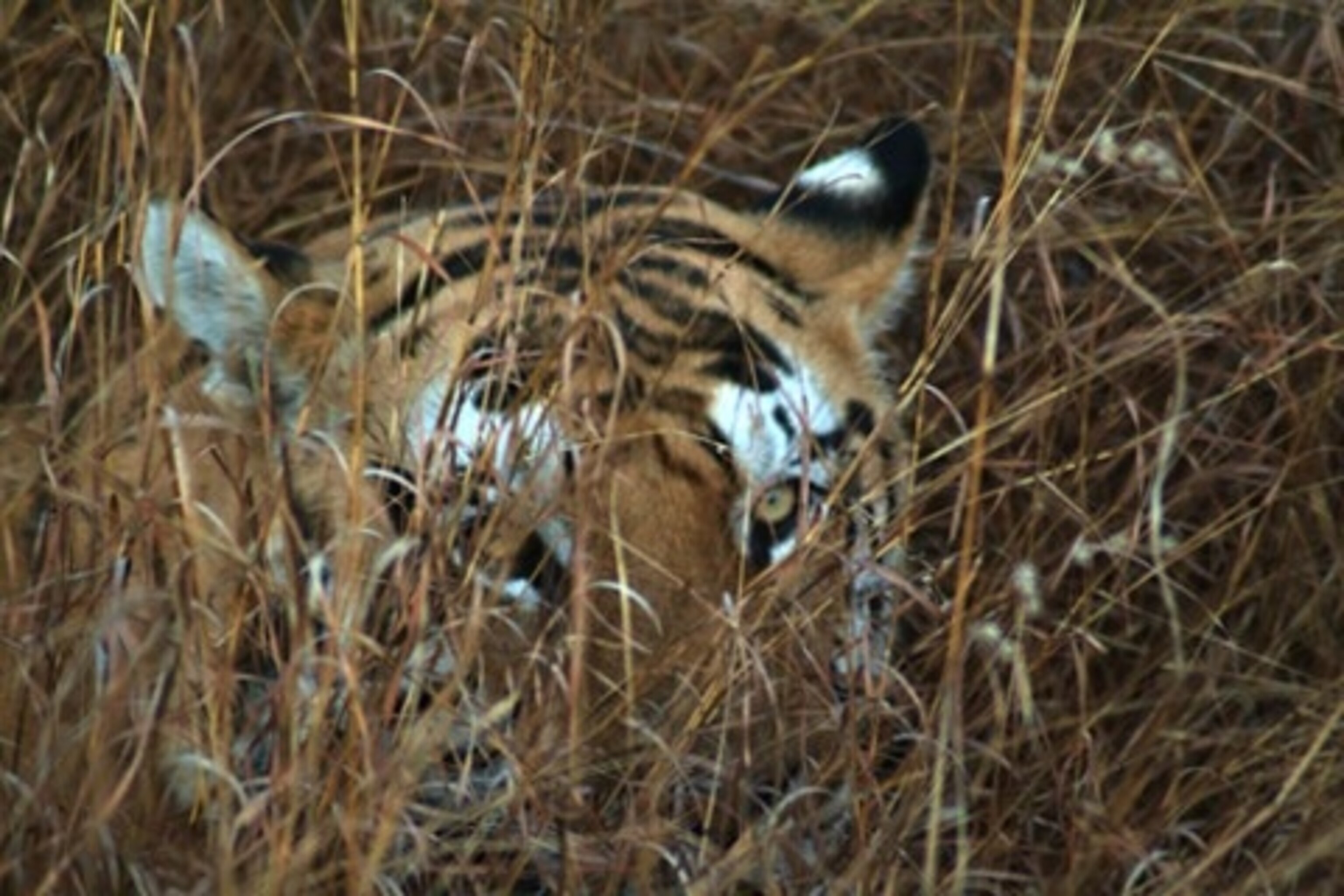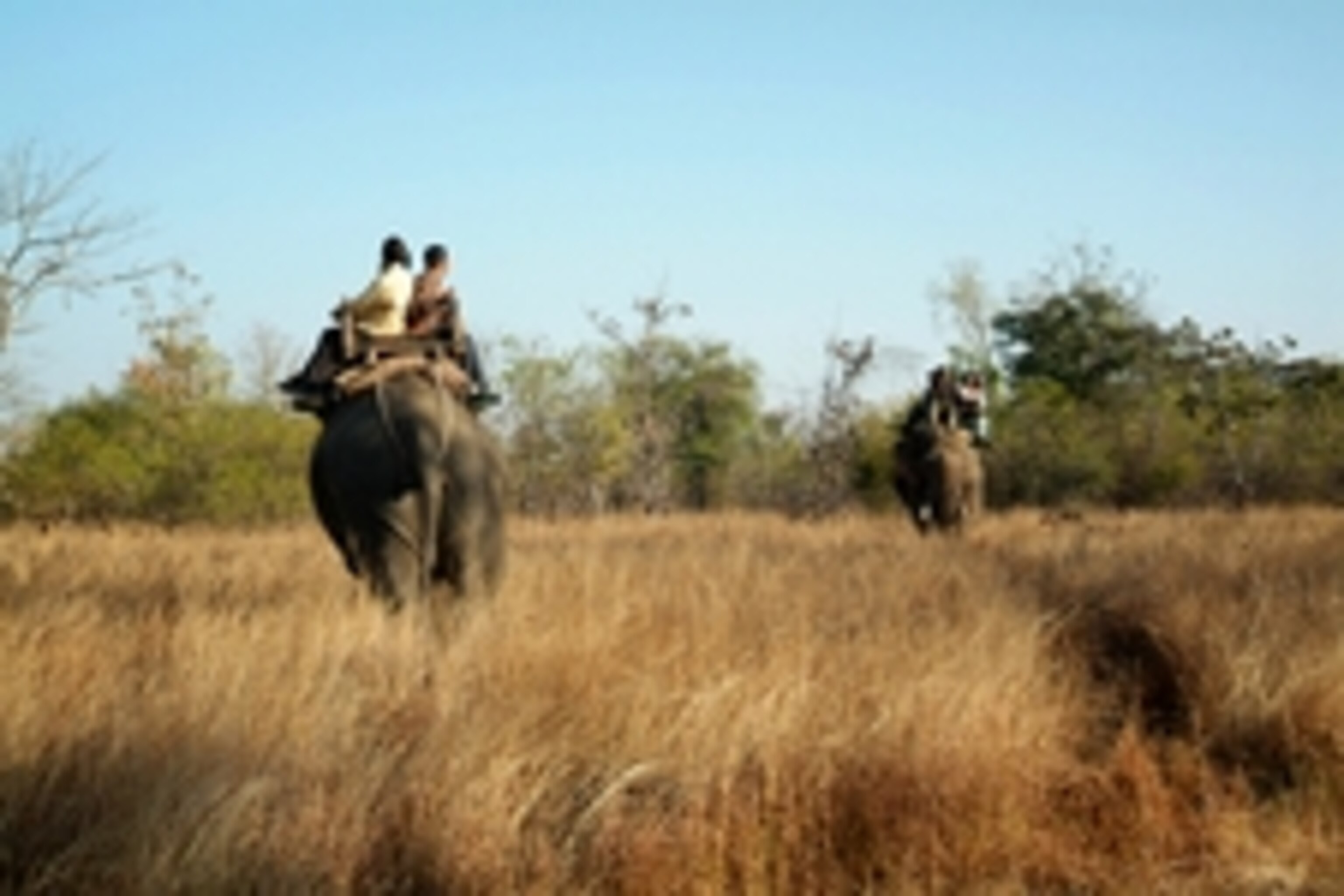
Where The Wild Things Were
Much to the consternation of tiger enthusiasts, reverence for these once-mythical beasts seems to be at an all-time low. The BBC reports that one of India’s fabled tiger parks, Panna National Park
in Madhya Pradesh, has admitted that its Royal Bengal tiger population is now believed to be zero. The main culprit, according to an investigative probe? Poaching.
This saddens me, particularly, as barely three years ago I came within several feet of one of these most majestic of Panna’s endagered residents (image, above). Though it was a short encounter (we, the tourists atop elephants in the bush, were limited to a few minutes of viewing and photographing, so as not to upset the shy animal), it remains my favorite recollection from India. Going on tiger safaris is certainly iconic and popular, but there is a specific disclaimer given to most tours: Tiger sightings are increasingly rare and are by no means guaranteed. With the knowledge that finding one of Panna’s then-healthy population of 24 tigers in the park’s 210-square-mile area was a textbook needle-in-haystack situation, I accepted this experience as one to hold in awe. And I was lucky to be able to do so. It now grieves me to think that experiences such as mine are on the extinction path.

“It’s difficult to believe people are still poaching [tigers] given all the projects set up to educate about the benefits of wildlife…I guess the short term gain is just too tempting,” says Emma Nielson, who was one of my tour leaders in India. The short term gain referred to is in the contraband of tiger bones, claws, and skins, which are superstitious amulets and ingredients coveted in countries such as China and Korea.
Recent years have seen a rise in poaching cartels that have outsmarted authorities, or included them through corruption, not unlike the business of organized drug smuggling.
Panna is the second park in India to succumb to tiger depletion, the first one being Sariska in Rajasthan–though it is reported that at least one more in Madhya Pradesh has fallen from grace as well. The estimated number of tigers in India hovers around 1,400–less than half the censused 3,642 five years ago. But dwindling figures are not news at all: a century ago, they numbered around 40,000.
India’s tiger conservation efforts are nearly four decades old now. With sobering statistics came initial legislation which brought about the hunting ban on tigers, and the creation of Project Tiger
in the early 1970s as an endeavor to track tiger numbers, educate about their importance, and protect them and their eco-systems from the hazards of habitat encroachment and poaching. The project has since tripled the number of tiger reserves established in India, while implementing strategies such as voluntary village relocation away from the reserves. Unfortunately, not all efforts to protect or promote the big cats are handled appropriately.
When signs that Panna’s tiger numbers were critically low already in 2007, a state-sanctioned policy of “tiger-shifting” (relocating female individuals from other nearby parks, with intent to mate with local males) was proposed. Panna received two tigresses, one from Bandhavgarh National Park and one from Kanha National Park. Sadly, this proved ineffective as the lone male specimen, which authorities believed was there, had since disappeared. Altogether, this systematic failure in preservation brings to light a more general issue: Madhya Pradesh’s terrible record of environmental conservation.
- National Geographic Expeditions
A 2007 study by the National Tiger Conservation Authority indicated that the total number of tigers in that state was down 60% to 276. In 2009, that number is reported
to be 232. This potentially places Madhya Pradesh–known in India and abroad as The Tiger State–below other Indian states in tiger numbers, dealing a blow to what should be a source of pride. Instead, the world looks on as the local government gives little import to what should be a flagship concern.
For someone who came face-to-face with one of Panna’s very last residents, it is sorrowful to realise how greed, mismanagement, and dubious politics have doomed my treasured experience to nothing more than a memory and a few photographs.
Photos: Stefan Caiafa
